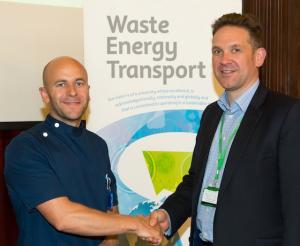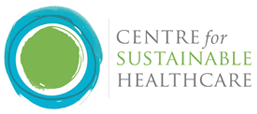- Group home
- You must register/login in order to post into this group.
Reuse of reject water from reverse osmosis for steam production

By: University Hospitals of Bristol NHS Foundation Trust
£15,000 (Estimated)
13,836 kg CO2e / year (Estimated)
Reverse osmosis water purification for dialysis results in large quantities of water being rejected. The rejected water is currently sent to the drains, despite being perfectly clean with a slightly raised mineral content. The project will capture this reject water in the children's dialysis unit at the Bristol Royal Hospital for Children, and direct it to the sump pump at the bottom of the Queen’s building. The pump has previously been used to remove spring water and take it to the boiler house. The reject water will be taken similarly for use in the boiler house to process into steam, saving on mains water demand and reducing water supply and sewerage costs.
Benefits to the environment
Level 8 reverse osmosis plant in the Children’s Hospital currently sends 1m3 of reject water per hour to the drains. There is also 140 litres lost in sanitisation (at least once per week).
Level 6 in the queens building is a smaller plant but will have proportional savings.
Water savings have been calculated for the main Children’s Hospital reverse osmosis plant at 8760m3 per annum. A smaller unit is estimated at half the size: Total annual water savings = 13,140m3 (13.14 million litres).
Estimated greenhouse gas saving = 13,836 kg CO2e / year*
*Conversion factors obtained from the 2012 Guidelines to Defra / DECC's GHG Conversion Factors for Company Reporting (Annex 9, Table 9a): - water supply: 344 kg CO2e / million litres - water treatment: 709 kg CO2e / million litres
Cost Benefit to the Trust
Investment costs: £45,000 for installation of piping and pump
Savings: > £15,000 per year on mains water and sewerage
Anticipated return on investment at 5 years:
= (total saving over 5y – total cost over 5y) / total cost over 5y x 100
= ((£15,000 x 5) - £45,000) / £45,000 x 100
= 67%
Details of implementation
Staff nurse Dan Speakman promoted the idea of RO water reuse through the Trust’s environmental campaign the Big Green Scheme. The initial idea was raised over two years ago. At that stage the focus for invest to save funding was on energy saving projects. Dan has persistently lobbied for the waste water to be captured despite receiving little initial support. His persistence in keeping the idea alive has paid off as water saving has more recently been recognised as an opportunity to make savings. An internal invest to save proposal (consisting of an outline of the project, the estimated costs involved and how savings would be achieved) has now been approved by Trust Finance, and installation is due to complete before the end of 2013.
The installation mainly consists of fitting pipes. A small pump will need to be fitted to get reject water from the smaller plant to join the larger RO reject water it will then be gravity fed to the sump pump that takes spring water up to the boiler house.
Bristol Royal Hospital for Children - Dialysis Unit
To follow example of other kidney units in the Green Nephrology Network, reducing waste of high quality reject water while saving on water and sewerage costs
Green Nephrology network - drew on similar case studies from dialysis units.
Joint winner of the 2013 Green Nephrology Awards: http://sustainablehealthcare.org.uk/green-nephrology/news/2013/09/bradford-and-bristol-royal-share-2013-green-nephrology-award
Received Green Impact award for best environmental idea within University Hospitals Bristol NHS Foundation Trust in 2013.
